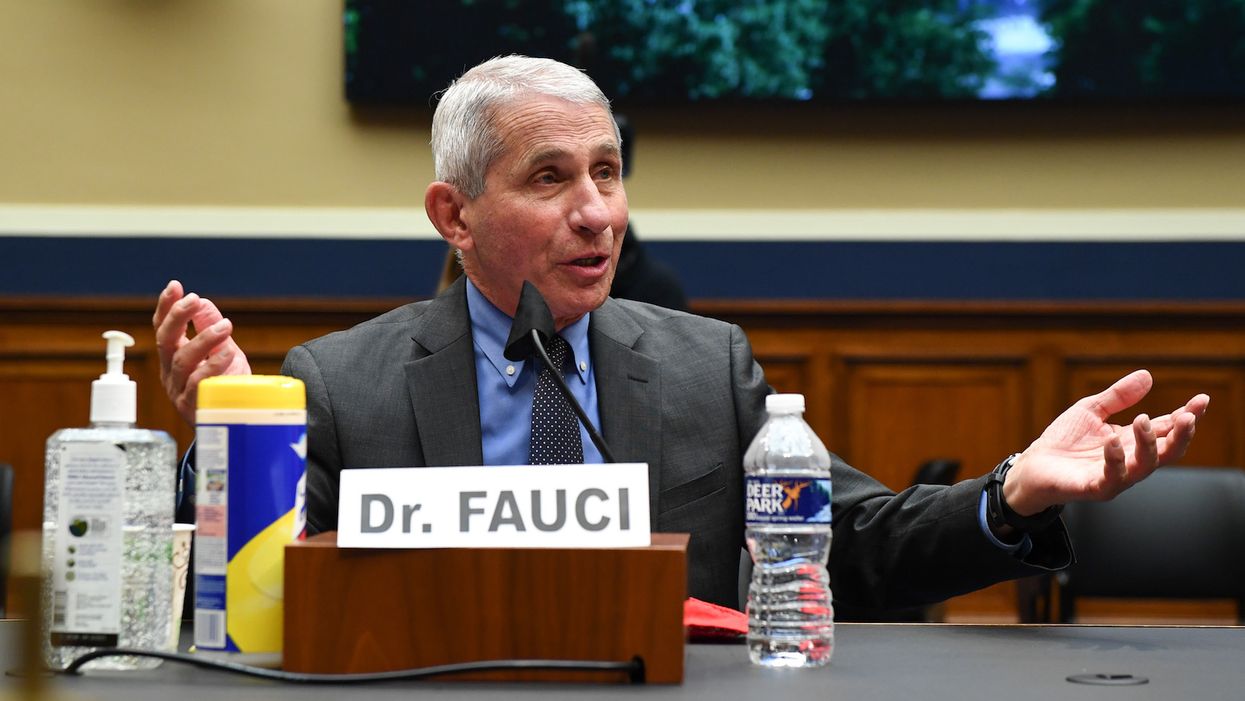
Dr. Anthony Fauci, director of the National Institute of Allergy and Infectious Diseases, testifies Tuesday at a hearing of the U.S. House Committee on Energy and Commerce on Capitol Hill. (Photo by Kevin Dietsch-Pool/Getty Images)

A possible move to 'pool testing'
Dr. Anthony Fauci, top public health expert on the White House coronavirus response task force, said Thursday that the White House is considering a new testing strategy as evidence mounts that the current strategy isn't as effective as it needs to be in slowing the spread of COVID-19, according to the Washington Post.
"Something's not working," Fauci said. "I mean, you can do all the diagramming you want, but something is not working."
What's the alternative? Right now, the strategy is to test as many people as possible on an individual basis so that people who are COVID-19 positive, even if they don't have symptoms, can isolate themselves.
The possible new strategy is called "pool testing," which would have a group of samples combined into one pool that is then tested. If that group of samples comes back negative, no further action is needed. If that group of samples comes back positive, then all the individuals in that pool would be tested individually.
The hope would be that this pool testing method would allow for a conservation of resources and for better identification of asymptomatic cases, which would then lead to quicker isolation of infected individuals.
"What you need to do is find the penetration of infected people in your society," Fauci said, according to the Post. "And the only way you know that is by casting a broad net."
Would it work? The effectiveness of the pool testing strategy would be dependent on a majority of Americans not having the virus. If too high a percentage of the population is infected, the strategy would not save any time or resources.
Scientific American describes it as a numbers game, giving the example of trying to identify positive individuals in a group of 100 people. Instead of doing 100 individual tests, you could divide them into five pools of 20, and test each group. If, for example, four of those groups test negative, and one group tests positive, then you only have to do 20 individual tests to figure out who is positive, saving a significant number of tests.
That's where the prevalence issue comes in. If the virus is too prevalent, and all five groups came back positive, no resources are saved by the method.
(H/T: New York Post)